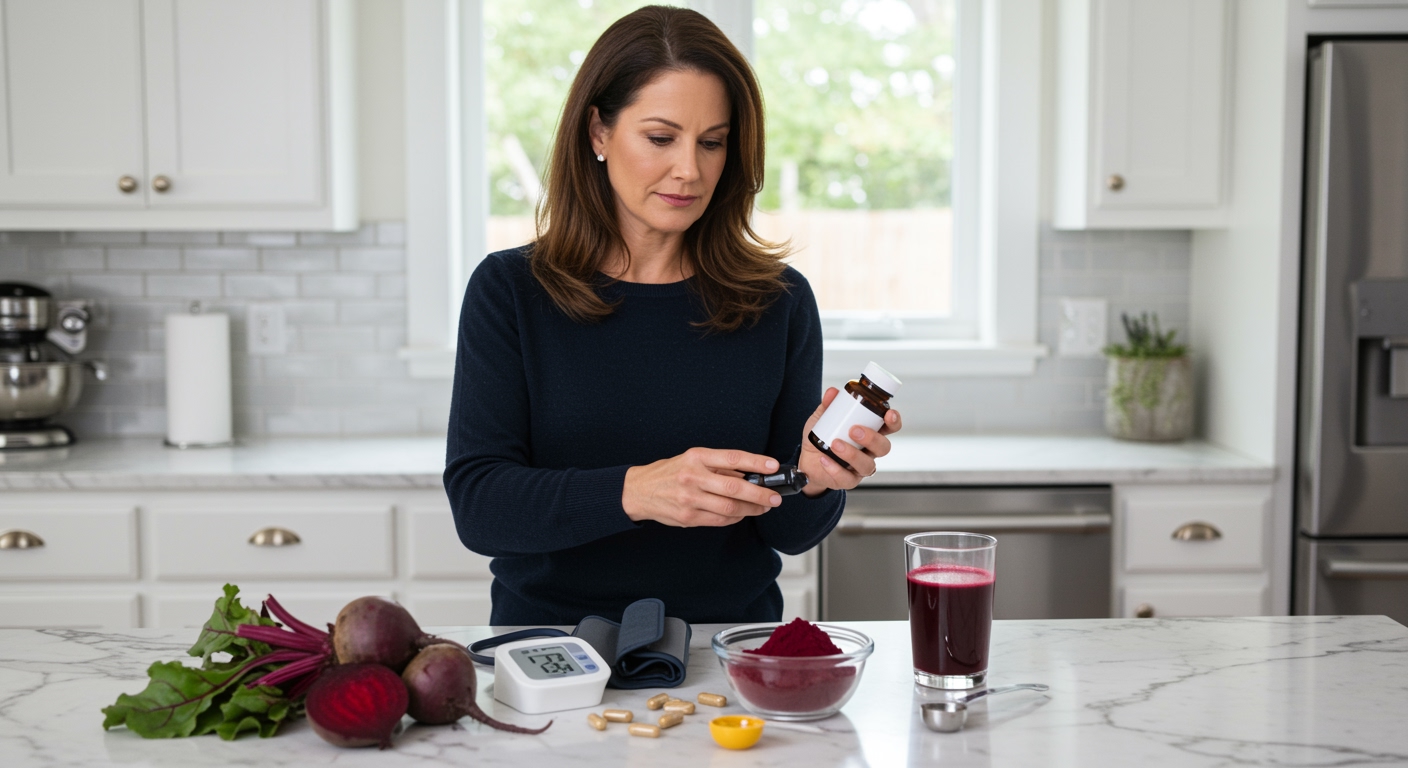✪ Key Takeaway: Edamame can help lower blood pressure through potassium, magnesium, and plant proteins that support cardiovascular health.
Introduction
Your doctor just told you that your blood pressure numbers are climbing into dangerous territory.
You might be wondering if simple dietary changes can make a real difference before you need medication. Many people with rising blood pressure feel overwhelmed by conflicting advice about which foods actually work and which ones are just health food marketing.
Hi, I am Abdur, your nutrition coach and today I am going to explain how edamame can become a powerful ally in your fight against high blood pressure.
What Makes Edamame Special for Blood Pressure?
Edamame contains a unique combination of nutrients that directly target the mechanisms behind high blood pressure.
One cup of edamame provides 676 milligrams of potassium, which is about 14% of your daily needs. Potassium works like a natural diuretic in your kidneys, helping your body eliminate excess sodium that raises blood pressure.
The magnesium content in edamame is equally impressive at 99 milligrams per cup. Magnesium acts as a natural calcium channel blocker, relaxing the smooth muscles in your blood vessel walls and allowing blood to flow more easily.
Edamame also delivers 17 grams of high-quality plant protein per cup. Research shows that replacing animal proteins with plant proteins can reduce systolic blood pressure by 2-3 mmHg, which might seem small but translates to significant cardiovascular benefits over time.
The fiber in edamame supports blood pressure control through multiple pathways. Soluble fiber helps reduce cholesterol absorption, while insoluble fiber promotes healthy gut bacteria that produce short-chain fatty acids with anti-inflammatory properties.
✪ Fact: Just one cup of edamame provides more potassium than a medium banana while delivering complete protein.
How Does the Science Support Edamame for Hypertension?
Multiple studies have examined soy foods like edamame and their effects on cardiovascular health.
A comprehensive analysis published in the American Journal of Clinical Nutrition found that consuming soy protein reduced systolic blood pressure by an average of 4.2 mmHg and diastolic pressure by 2.8 mmHg. These reductions are clinically meaningful because even small decreases in blood pressure significantly reduce stroke risk and heart disease.
The isoflavones in edamame deserve special attention for blood pressure management. These plant compounds act as natural ACE inhibitors, blocking the enzyme that converts angiotensin I to angiotensin II, a powerful blood vessel constrictor.
Research specifically on edamame consumption shows that people who eat soy foods regularly have lower rates of hypertension compared to those who avoid them. The DASH diet studies, which are considered gold standard research for blood pressure management, consistently include legumes like edamame as core components.
What makes this research particularly compelling is that the blood pressure benefits appear within just 6-8 weeks of regular consumption. Your body responds quickly to the nutrient density that edamame provides.
✪ Pro Tip: Combine edamame with other DASH diet foods like leafy greens and whole grains for maximum blood pressure benefits.
What Is the Best Way to Eat Edamame for Blood Pressure?
The preparation method you choose can significantly impact how much benefit you get from edamame.
Steaming edamame preserves the highest levels of potassium and magnesium compared to boiling, which leaches these crucial minerals into the cooking water. Steam fresh or frozen edamame for 4-5 minutes until the pods are bright green and tender.
Avoid adding excessive salt when preparing edamame, as sodium counteracts the blood pressure benefits. Instead, try sprinkling them with garlic powder, black pepper, or a small amount of sea salt for flavor without overwhelming your sodium intake.
The timing of consumption matters for blood pressure management. Eating edamame as an afternoon snack helps maintain steady blood sugar levels, which prevents the blood pressure spikes that often occur with processed snack foods.
For optimal results, aim for 1/2 to 1 cup of shelled edamame 3-4 times per week. This provides consistent exposure to the beneficial compounds without overdoing any single food in your diet.
You can also incorporate edamame into salads, stir-fries, or grain bowls to increase your overall vegetable intake while supporting blood pressure goals.
✪ Note: Fresh edamame contains slightly higher nutrient levels than frozen, but both forms provide significant blood pressure benefits.
Are There Any Concerns About Eating Edamame for Hypertension?
Most people can safely include edamame in their blood pressure management plan, but certain considerations apply.
If you take blood pressure medications, particularly ACE inhibitors or potassium-sparing diuretics, the high potassium content in edamame could potentially cause your potassium levels to rise too high. Always discuss dietary changes with your healthcare provider before making significant modifications.
People with soy allergies obviously need to avoid edamame completely. However, soy allergies are relatively uncommon in adults, affecting less than 1% of the population. Most people who think they have soy sensitivity actually have issues with processed soy products rather than whole soy foods like edamame.
The fiber content in edamame can cause digestive discomfort if you increase your intake too quickly. Start with small portions and gradually increase to allow your digestive system to adapt.
Some people worry about the phytoestrogens in soy affecting hormone levels, but research consistently shows that moderate consumption of whole soy foods like edamame does not cause hormonal disruption in healthy adults. The benefits for cardiovascular health far outweigh these theoretical concerns.
Quality matters when choosing edamame. Look for organic options when possible to minimize exposure to pesticide residues, and avoid products with added sodium or artificial preservatives that could counteract the blood pressure benefits.
✪ Pro Tip: Keep a food diary to track how edamame affects your blood pressure readings and overall well-being.
The Bottom Line
Edamame offers a scientifically-backed, practical approach to supporting healthy blood pressure through its unique combination of potassium, magnesium, plant protein, and beneficial plant compounds.
Small dietary changes create big health transformations when you choose foods that work with your body instead of against it. The research clearly shows that incorporating edamame into a balanced diet can provide meaningful blood pressure benefits within weeks of regular consumption.
I would love to hear about your experience with edamame and blood pressure management in the comments below, and please share any questions you might have about incorporating this nutritious food into your daily routine.
References
At NutritionCrown, we use quality and credible sources to ensure our content is accurate and trustworthy. Below are the sources referenced in creating this article:
- Health Digest: Eating Edamame Has Unexpected Effect On Blood Pressure
- PMC: Soy Food Consumption and Hypertension
- Soy Connection: High Blood Pressure Soyfoods May Be A Good Fit
- American Heart Association: Plant Based Proteins May Help Lower High Blood Pressure Risk





